|
Home →
Algonquin Winter Tracking
Algonquin Winter Tracking Expedition 2006
|
Thursday (Day 5) part A
|
|
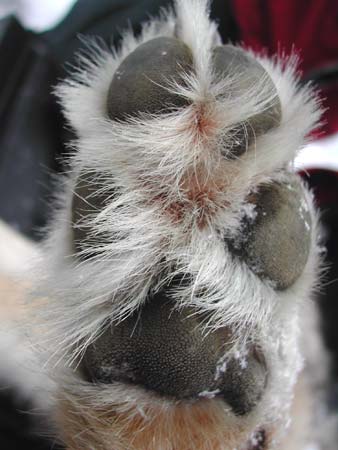
Photo by Dan Gardoqui |
In the morning we were given a
very informative
presentation by one of the wolf researchers working in the
park. She had with her the body of a wolf that had been
killed by a logging truck (yes, there's active logging going
on in Algonquin Park). This is the left hind paw. |
|
|
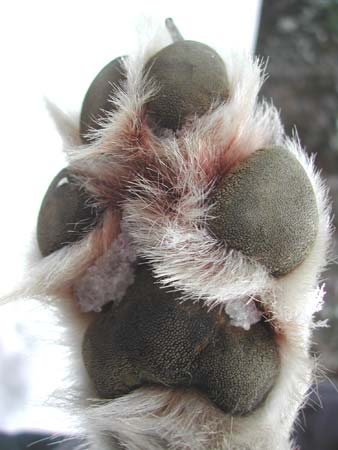
Photo by Dan Gardoqui |
And the left front paw. |
|
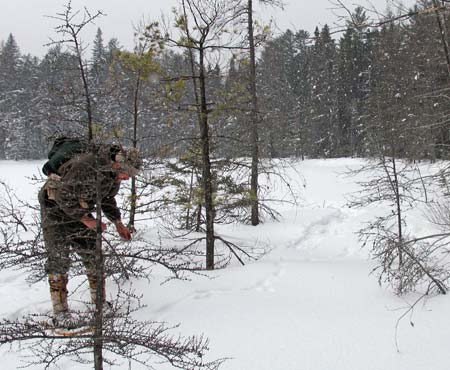 |
Then we split into two
separate groups. I elected to stay with the group which
explored the area of the research station, seeking to follow a
set of wolf tracks from the previous day. The adventures of
the other group are documented on the next page. We picked up the
trail at Bat Lake. |
|
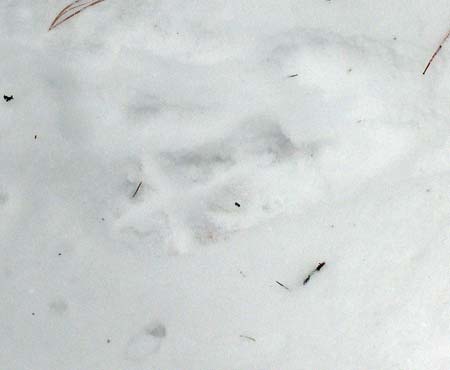 |
The trail was made by two
wolves, one much larger than the other. In fact, the
disparity of track sizes made us wonder for a while if one
set was made by a fox or coyote travelling through earlier
than the wolf which seemed to have followed later. But we eventually decided
they were both wolves, as we finally found clear prints made
by both animals.
This is a track made by the larger wolf.
|
|
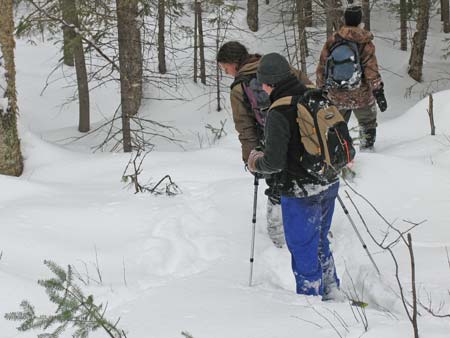 |
The trails led up and away
from Bat Lake into the forest, over a ridge, and down to the
next lake, Sassejewun Lake. |
|
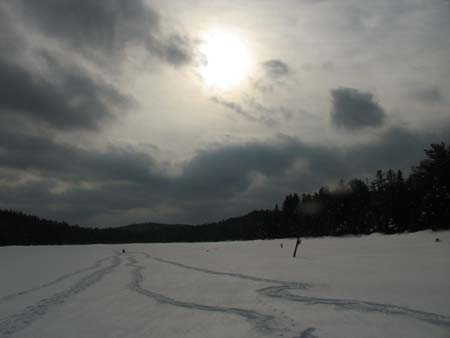 |
Our tracks across a frozen
lake. Ok, it wasn't really that dark out ... that's just
some photographic trickery. |
|
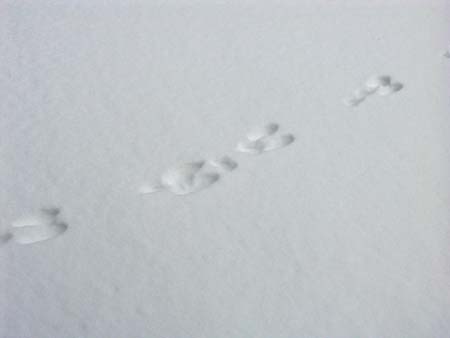 |
Here's a nice sequence of
Snowshoe Hare tracks. Here the animal is moving from left
to right. it stopped in the middle of the photo. Notice the
small tracks behind the larger ones - these are its front
feet. When a rabbit or hare is moving normally, the rear
(larger) feet come down ahead of the smaller front feet.
When it stops to pause or rest, it places its front feet ahead of the
rear ones while it is stopped. When it starts moving again it
picks up its front feet and places them farther forward and
brings its hind feet up ahead of the front feet, as it
resumes its normal gait. The Hare in this photo resumed
its usual gait and speed, as evidenced by the distance to the next
track, as it exits the photo to the right.
The preceding is an example of how you can analyze tracks
to figure out "what happened here". |
|
| |
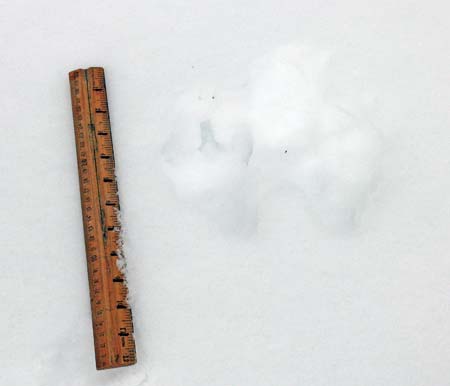 |
And here's another set of
Snowshoe Hare tracks. This one was bounding up a snowy
slope. Notice how the toes are showing. They splay their
toes in order to get a better "grip" in the snow - that is,
to maximize the surface area of their feet so they don't
sink into the snow as much. Again, note the ruler placed
beside the track to give a sense of scale and also to
measure the tracks. |
|
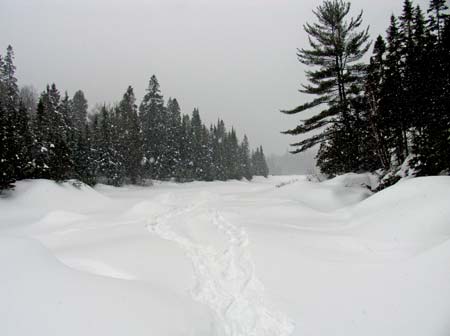 |
Heading up a frozen rapids to
the next lake, still on the trail of the wolves. |
|
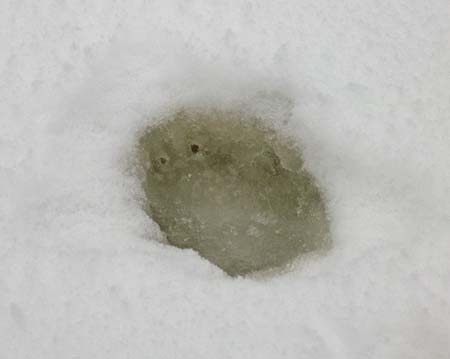 |
This wolf track was in the
slush on top of the ice, under freshly fallen snow, part way
up the river in the above photo. We blew
away the light fluffy snow covering the track and voila! A
track complete with nails! |
|
| |
| All in all, a great day, exploring the bush and trekking across
frozen lakes. I've only shown a portion of what we found and where we
went. The other group came upon an actual live wolf, as well as three
moose. But I have no photos of that, as I wasn't with them. Perhaps some
of them will contribute some photos for this narrative! |
| |
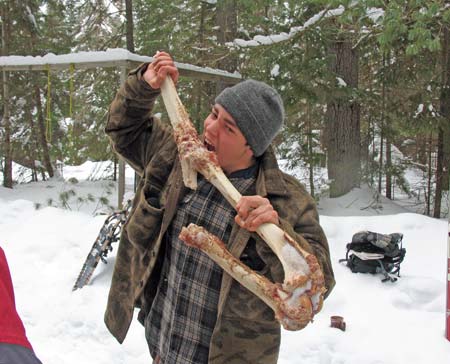 |
And you know I gotta put this
picture in! Some wildlife researchers had a moose legbone in
their truck. This is one of the Algonquin Tracking
Expedition participants, Liam. A little too long since
lunch, I guess. All in all it was a GREAT week! Friday morning was spent attending tracking
presentations. Thanks to Dan and White Pine staff for
contributing their knowledge and tracking expertise, and to
Caren the cook for great meals, and to the participants for
their good sense of humour and sense of adventure. |
|
| |
|
Previous
Next |
|
|